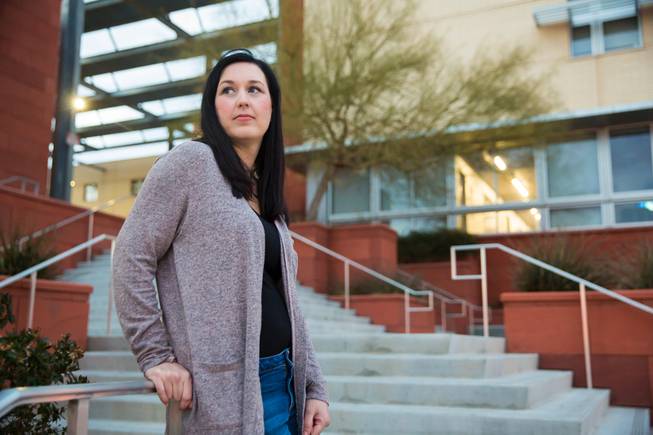Sunday, Feb. 17, 2019 | 2 a.m.
About five years ago, Las Vegan Tiffany Gordon decided to become a bone-marrow donor.
Her decision to volunteer her DNA to a bone-marrow registry to help those battling blood cancers like leukemia or lymphoma was inspired by her desire to serve the community.
“It's such an amazing opportunity to be able to help someone in this situation,” Gordon said. “I would just hope that if I were ever in a situation like this, or anyone in my family … that someone would be there to help them," she said.
Gordon, who facilitates clinical studies for the Comprehensive Cancer Centers of Nevada, says becoming a donor was simple, only requiring a quick swab of the inner cheek and some paperwork.
Once in the system, five years went by without a word from the registry.
Then in late December, the Gift of Life Marrow Registry — the international bone marrow and blood stem-cell database that now counts Gordon among its volunteers — contacted her to say she was a match for a patient in need of new marrow.
About one in every 250 would-be donors is tabbed as a match annually.
"To get that call was earth-shattering, in a good way. I could potentially help someone live their life to the fullest, which is awesome when they're not doing so well,” she said. “And working in cancer research and not having that direct patient contact makes it even more exciting for me, because we're working on cures for all these different diseases and for this particular person, what's going to help them is my blood.”
Gordon, who has seen women in her own family overcome breast cancer, wasn’t told anything about the person she is saving. Under federal law, donors and their beneficiaries must avoid contact until a year after the procedure.
Advances in how marrow is extracted have made the idea of donating more palatable. The bone marrow harvest that involves hip punctures is happening less frequently, and it is done under anesthesia, thus the donor experiences no pain during the procedure. If the donation involves peripheral blood stem cells, a donor takes medicine before the nonsurgical procedure to force more blood-forming cells from the marrow and into the bloodstream. The donor’s blood is then removed through a needle in one arm with little pain.
As for Gordon’s upcoming donation, she recently completed preliminary work in which a physician ran a blood test and checked for infectious diseases. She will complete a consent form and health history questionnaire.
Next month, she will take the next step called the donor workup, which will include a physical checkup and an informational session explaining the donation process before moving onto the transplant stages.
Ann Lovelace, who oversees Gordon at the Cancer Centers, said Gordon is eager to see the process through.
“She was very excited when she got the call because she knew it was her chance to actually help somebody ... to know that there is a real person out there that probably has children and grandchildren. She’s been very excited about it,” Lovelace said.
There are multiple ways to help the Gift of Life Marrow Registry, including by donating money, registering as bone marrow or stem-cell donor or organizing a donor drive. To learn more, visit: giftoflife.org.

